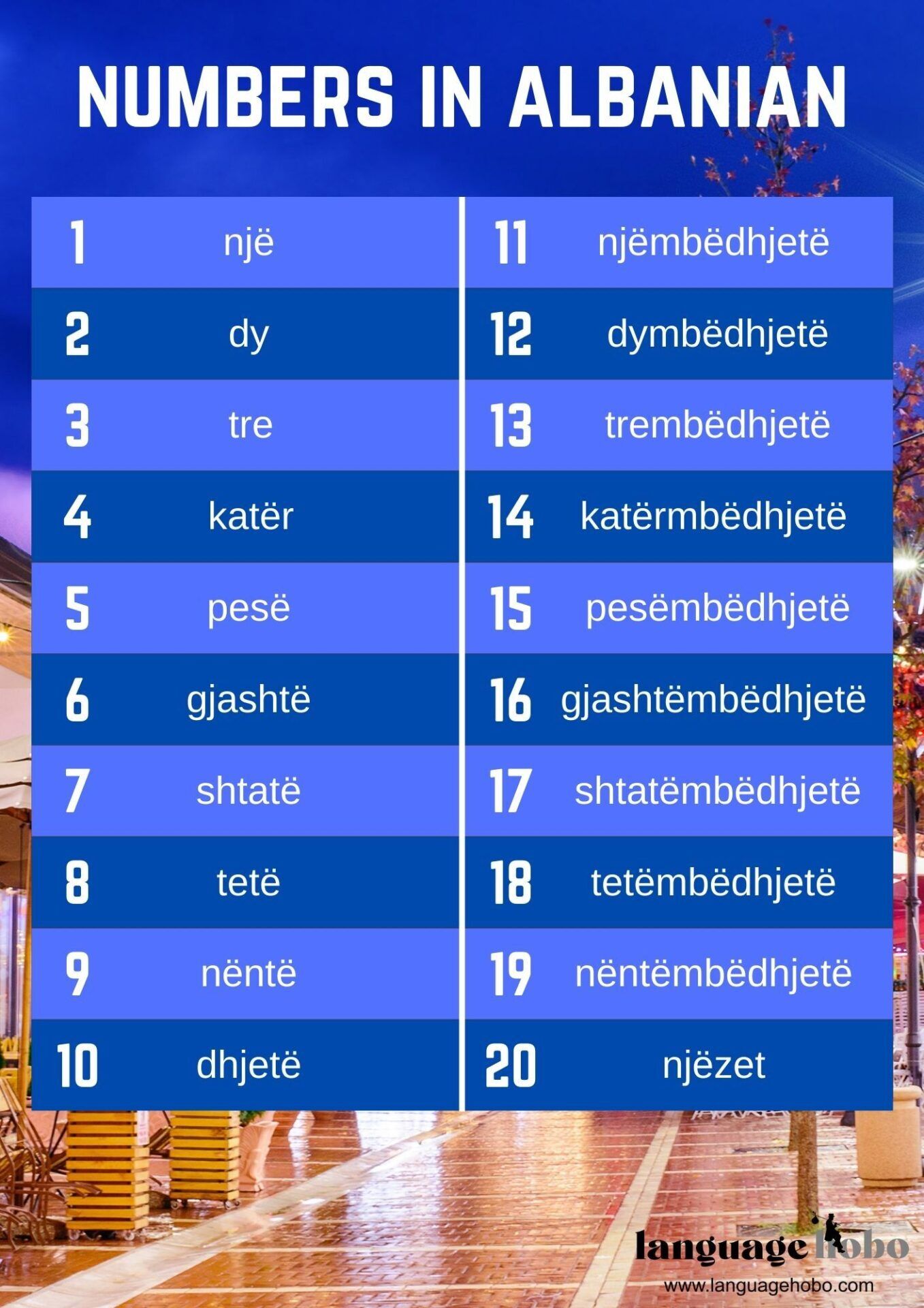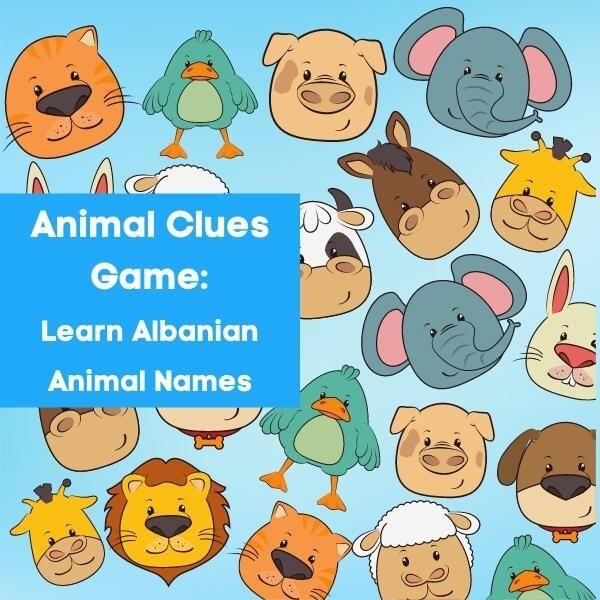Numbers And Counting In Albanian
Learning how to count and use numbers is a vital part of learning any new language. You’re not going to get far without understanding at least the basics of numbers and counting.
In Albanian, as in all languages, there are different ways to express numbers depending on what you’re trying to say. For example, cardinal numbers are used differently than ordinal numbers, and as such, have a different form.
These are all things that you need to be aware of as you learn Albanian, because you’ll constantly be encountering numbers throughout your journey. Whether you’re trying to state the date or your age, being able to count and use numbers correctly is essential.
In this guide, we’ll cover all the different ways you can express numbers in Albanian. By the end, you’ll be able to confidently use numbers in almost any situation.
Cardinal Numbers in Albanian

Cardinal numbers are used to express quantity and are typically used when counting or enumerating. They’re the most basic form of numbers and are usually the first ones that you’ll encounter when learning a new language.
In Albanian, numbers are pretty straightforward, especially once you’re familiar with numbers 1-20. You have unique numbers for 1-10, then the “teens” are formed by adding the suffix “-mbëdhjetë” (a form of the Albanian word for “ten”) to the end of numbers 1-9.
Tens, with the exception of number 20 (which is “njëzet”) and 40 (which can be written as “dyzet”), follow the pattern of single digit plus the suffix for “ten”. For example, 50 is “pesëdhjetë“
After that, it’s just a matter of adding “e ” (meaning “and”) between the tens and single digits to form numbers like 21, 35, etc. Example, 75 would be “shtatëdhjetë e pesë”.
| Cardinal Numbers (English) | Numrat Kardinale (Albanian) |
|---|---|
| zero | zero |
| one | një |
| two | dy |
| three | tre |
| four | katër |
| five | pesë |
| six | gjashtë |
| seven | shtatë |
| eight | tetë |
| nine | nëntë |
| ten | dhjetë |
| eleven | njëmbëdhjetë |
| twelve | dymbëdhjetë |
| thirteen | trembëdhjetë |
| fourteen | katërmbëdhjetë |
| fifteen | pesëmbëdhjetë |
| sixteen | gjashtëmbëdhjetë |
| seventeen | shtatëmbëdhjetë |
| eighteen | tetëmbëdhjetë |
| nineteen | nëntëmbëdhjetë |
| twenty | njëzet |
| twenty-one | njëzet e një |
| twenty-two | njëzet e dy |
| thirty | tridhjetë |
| forty | dyzet |
| fifty | pesëdhjetë |
| sixty | gjashtëdhjetë |
| seventy | shtatëdhjetë |
| eighty | tetëdhjetë |
| ninety | nëntëdhjetë |
| hundred | njëqind |
| one hundred and one | njëqind e një |
| one hundred and twenty-five | njëqind e njëzet e pesë |
| thousand | një mijë |
| million | një milion |
Ordinal Numbers in Albanian
Ordinal numbers are used to express position or rank in a sequence. They are typically used to identify specific items in a list, such as “the first item” or “the second item”.
In Albanian, ordinal numbers follow a pattern that’s dependent on the gender of the noun they’re modifying. For example, the masculine form of “first” is “i parë”, while the feminine form is “e parë.
“First” is also a bit of an outlier in that it’s the only ordinal number that doesn’t stem from its cardinal form.
The rest of the ordinal numbers, with the exception of ordinals ending in “second” (“i/e dytë”) and “third” (“i/e tretë”), don’t change from their cardinal forms. You simply add either the masculine or feminine article before them, then you’re good to go.
Example: i/e katërt – fourth; “i/e njëzet e gjashtë” – twenty-sixth.
Note: In Albanian, adjectives follow the noun they’re describing. Thus, when using ordinals as adjectives, the same rules apply. Example: the second woman – “gruaja e dytë“.
| Ordinal Numbers (English) | Numrat Rendor (Albanian) |
|---|---|
| first | e/i parë |
| second | e/i dytë |
| third | e/i tretë |
| fourth | e/i katërt |
| fifth | e/i pestë |
| sixth | e/i gjashtë |
| seventh | e/i shtatë |
| eighth | e/i tetë |
| ninth | e/i nëntë |
| tenth | e/i dhjetë |
| twentieth | e/i njëzetë |
| forty-sixth | e/i dyzet e gjashtë |
Fractions in Albanian
Fractions are typically used to express part of a whole or a quantity that’s less than one. In English, you know them as things like “half”, “quarter”, and “a third”. You’ll need to know how to say fractions in Albanian if you want to be able to cook, tell the time, talk about sizes, etc.
Below, you’ll find some of the most common fractions you’ll need on your journey to fluency in Albanian.
| Fractions (English) | Thyesat (Albanian) |
|---|---|
| half | gjysma |
| a quarter | një çerek / një e katërta |
| two thirds | dy të tretat |
| a third | një e treta |
| three fifths | tre të pestat |
| three quarters | tre të katërtat |
Other
Here, we show you some common tuples (double, triple, etc.) and multiplicative adverbs (once, twice, etc.). The former deals with expressing quantity, while the latter is used when talking about frequency.
Forming tuples in Albanian is actually pretty easy. You simply take the cardinal number and add the suffix “-she” to it. See this in action in the table below.
| double | dyshe |
| triple | treshe |
| dozen | duzinë |
| once | një herë / dikur |
| twice | dy herë |
Age in Albanian
One of the first things you learn to say in any language is your age. It’s like a rite of passage! When you meet someone new, it’s one of the first questions they’ll ask you (along with your name). So, being able to answer this question is essential.
Saying your age in Albanian is, in our opinion, a lot more intuitive than in a language like Spanish (where they use “I have” as opposed to “I am”). The sentence is formed similarly to how it is in English; you simply say, “I am X age” – “Unë jam X vjeç”, where “X” is a cardinal number. See for yourself!
Note: When asking someone’s age, use “je” to be informal, and “jeni” to be formal (with someone you don’t know well).
| How old are you? | Sa vjeç je (jeni)? |
|---|---|
| I am twenty-five years old | Unë jam njëzet e pesë vjeç |
| I am twelve years old | Unë jam dymbëdhjetë vjeç |
Time in Albanian
Another essential conversation topic is time. You’ll need to know how to ask and tell time if you want to be able to catch a bus or train, set up an appointment, or just keep track of your day.
In general, Albanian makes telling the time quite easy, particularly when dealing with a whole number (e.g., “It’s two o’clock”). You just say, “The hour is two” – “Ora është dy”.
| What’s the time? | Sa është ora? |
|---|---|
| It’s seven o’clock | Ora është shtatë |
| It’s four o’clock | Ora është katër |
You can learn more about how to tell the time in Albanian here.
The Date in Albanian
Being able to ask or say what the date is in Albanian will come in handy when you need to set up an appointment or make plans with a friend.
Unlike in English, Albanian doesn’t use ordinal numbers to express dates, but keeps things simple by using the regular, old cardinal number. And we love ’em for it!
When forming the answer to the question, “What’s the date today?”, the structure goes as follows: “Date today is X Y”, where “X” is the cardinal number, and “Y” is the month. Take a look below.
| What’s the date today? | Sa është data sot? |
|---|---|
| It’s the fifth of March today | Data sot është pesë mars |
| It’s the twenty-third of October today | Data sot është 23 tetor |
We hope you’ve found this useful, and that you’re now able to count and express quantity in Albanian like a pro! Wanna learn some more everyday vocabulary? Check out our post Greetings and Salutations in Albanian to learn how to say hello.



